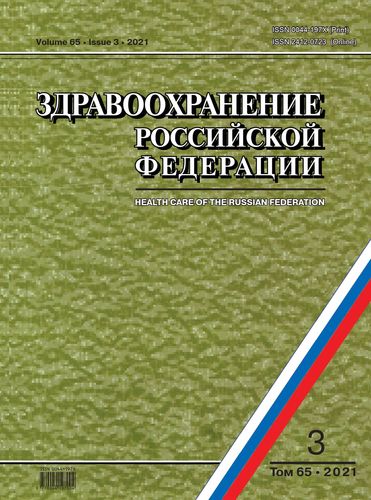Медицинская эвакуация персонала удалённых промышленных объектов. Проблемы и пути решения
- Авторы: Карпов А.Б.1,2, Скобельский А.В.3, Бадмаева Э.Р.2, Шибалков И.П.2, Мазуров Р.Г.3, Антипов С.А.3
-
Учреждения:
- Ассоциация «Институт отдалённого здравоохранения»
- ФГБОУ ВО «Сибирский государственный медицинский университет» Минздрава России
- ООО «Центр корпоративной медицины»
- Выпуск: Том 65, № 3 (2021)
- Страницы: 214-221
- Раздел: ОРГАНИЗАЦИЯ ЗДРАВООХРАНЕНИЯ
- Статья получена: 25.10.2024
- URL: https://rjeid.com/0044-197X/article/view/637716
- DOI: https://doi.org/10.47470/0044-197X-2021-65-3-214-221
- ID: 637716
Цитировать
Полный текст
Аннотация
Введение. Организация медицинской помощи работникам удалённых промышленных объектов (УПО) является крайне актуальной задачей, и роль медицинской эвакуации в системе оказания помощи трудно переоценить. Однако в настоящее время в России нет единой системы медицинской эвакуации, отсутствуют данные о структуре причин эвакуаций и экономическое обоснование необходимого объёма финансирования этого направления.
Цель исследования – оценка структуры причин медицинских эвакуаций персонала УПО, а также их возможной взаимосвязи с сезонностью, профилем предприятий и возрастом работников.
Материал и методы. Учитывая то, что основную массу персонала УПО составляют мужчины, был проведён анализ 1823 эвакуаций среди мужского персонала (1159 плановых и 664 экстренных). Исследована структура причин эвакуаций в зависимости от возраста, времени года, профиля промышленного предприятия. Для оценки значимости различий между анализируемыми показателями использовали критерий χ2 Пирсона (уровень значимости p < 0,05).
Результаты. В структуре всех эвакуаций персонала УПО со значительным опережением лидируют болезни системы кровообращения, далее располагаются травмы и отравления, болезни органов пищеварения и болезни органов дыхания. Главной причиной экстренных эвакуаций служат травмы и отравления. В группе работников до 39 лет первые три позиции занимают травмы и отравления, болезни органов пищеварения и болезни системы кровообращения, а в группе старших возрастных интервалов значительно превалируют болезни системы кровообращения, второе место занимают травмы и отравления, и третье – болезни органов пищеварения.
Заключение. Главными направлениями в улучшении системы оказания медицинской помощи и сохранения здоровья персонала УПО являются разработка комплекса нормативно-правовых актов, регламентирующих деятельность в сфере удалённого здравоохранения, организация единой государственной системы медицинской эвакуации, развитие и внедрение телемедицинских технологий, формирование образовательных курсов и программ подготовки медицинских специалистов для работы в сфере удалённого здравоохранения.
Участие авторов:
Карпов А.Б. — концепция и дизайн исследования, написание текста, редактирование;
Антипов С.А. — концепция и дизайн исследования, редактирование;
Бадмаева Э.Р. — сбор и обработка материала, сбор и анализ данных литературы, написание текста;
Скобельский А.В. — сбор и обработка материала, редактирование;
Мазуров Р.Г. — сбор и обработка материала;
Шибалков И.П. — сбор и обработка материала, статистическая обработка.
Все соавторы — утверждение окончательного варианта статьи, ответственность за целостность всех частей статьи.
Финансирование. Исследование не имело спонсорской поддержки.
Конфликт интересов. Авторы заявляют об отсутствии конфликта интересов.
Ключевые слова
Об авторах
А. Б. Карпов
Ассоциация «Институт отдалённого здравоохранения»; ФГБОУ ВО «Сибирский государственный медицинский университет» Минздрава России
Автор, ответственный за переписку.
Email: noemail@neicon.ru
ORCID iD: 0000-0001-7858-4235
Россия
А. В. Скобельский
ООО «Центр корпоративной медицины»
Email: noemail@neicon.ru
ORCID iD: 0000-0001-5934-4041
Россия
Эржена Рабдановна Бадмаева
ФГБОУ ВО «Сибирский государственный медицинский университет» Минздрава России
Email: bat81@mail.ru
ORCID iD: 0000-0002-1891-1123
Аспирантка каф. организации здравоохранения и общественного здоровья ФГБОУ ВО СибГМУ Минздрава России, 634050, Томск.
e-mail: bat81@mail.ru
РоссияИ. П. Шибалков
ФГБОУ ВО «Сибирский государственный медицинский университет» Минздрава России
Email: noemail@neicon.ru
ORCID iD: 0000-0002-4255-6846
Россия
Р. Г. Мазуров
ООО «Центр корпоративной медицины»
Email: noemail@neicon.ru
ORCID iD: 0000-0002-7740-1377
Россия
С. А. Антипов
ООО «Центр корпоративной медицины»
Email: noemail@neicon.ru
ORCID iD: 0000-0002-6767-0602
Россия
Список литературы
- Ведзижева М.Д., Живов И.В., Касаткин Е.Н., Горев С.Г., Полишко А.И. Санитарная авиация Кировской области. Вятский медицинский вестник. 2018; (2): 32-5.
- Садовникова М.А., Смирнов А.В. Анализ перспектив развития санитарной авиации в России. В кн.: Волков А.В., ред. Материалы XXX научно-технической конференции по аэродинамике. Жуковский; 2019: 168-9.
- Лобжанидзе А.А., Яценко И.Б., Ткаченко О.Е., Барыгин М.Е. Организация и оценка функционирования региональной службы санитарной авиации. Ученые записки СПбГМУ им. акад. И.П. Павлова. 2016; 23(1): 21-5.
- Попов И.А., Абдоков Б.М. Роль санитарной авиации при оказании своевременной медицинской помощи в условиях ЧС. Бюллетень медицинских интернет-конференций. 2015; 5(5): 681.
- Прокопьева М.И. Роль санитарной авиации в оказании экстренной помощи в условиях Крайнего Севера. Тюменский медицинский журнал. 2011; (2): 59-60.
- Прокопьева М.И. Особенности организации скорой медицинской помощи в условиях Крайнего Севера. Проблемы науки. 2019; 38(2): 70-4.
- Baxt W.G., Moody P. The impact of advanced prehospital emergency care on the mortality of severely brain injured patients. J. Trauma. 1987; 27(4): 365-9. https://doi.org/10.1097/00005373-198704000-00004
- Jacobs L.M., Gabram S.G., Sztajnkrycer M.D., Robinson K.J., Libby M.C. Helicopter air medical transport: ten-year outcomes for trauma patients in a New England program. Conn. Med. 1999; 63(11): 677-82.
- Schwartz R.J., Jacobs L.M., Juda R.J. A comparison of ground paramedics and aeromedical treatment of severe blunt trauma patients. Conn. Med. 1990; 54(12): 660-2.
- Norman J.N., Brebner J. Remote health. Remote medicine. Occup. Health (Lond.). 1988; 40(7-8): 598-600.
- Dethleff D., Weinrich N., Kowald B., Hory D., Franz R., Nielsen M.V., et al. Air medical evacuations from the German North Sea Wind farm bard offshore 1: traumatic injuries, acute diseases, and rescue process times (2011-2013). Air. Med. J. 2016; 35(4): 216-26. https://doi.org/10.1016/j.amj.2016.02.002
- Писарева И.Г. О применении телемедицинских технологий при оказании экстренной консультативной медицинской помощи. Здравоохранение Дальнего Востока. 2019; 79(1): 40-3.
Дополнительные файлы










